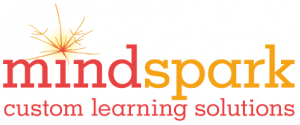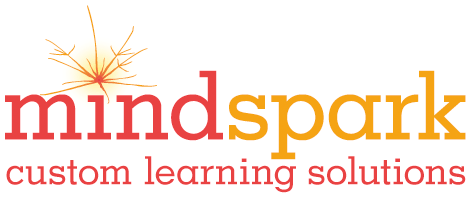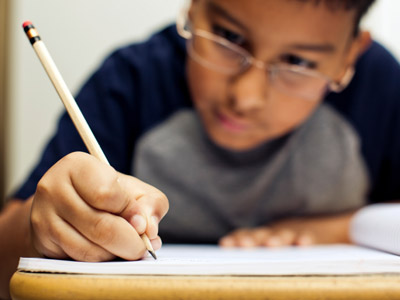So, you’ve been working with a kiddo whose spelling is great, grammar is excellent, but who melts down when asked to write in class; the more open the assignment, the more panicked the student. You’ve been using Lindamood Bell’s Visualize and Verbalize program to help connect the pictures of the right side of the brain with the words on the left side of the brain. Maybe you have started supplementing that with the Guess the Animal game I described in Part I of this series. But now you are looking for some other activity to continue developing both receptive and expressive language, all while building comprehension and writing skills.
In Part I, we made sure we had scene builders, folders and pattern blocks in our tool kit. What, you may have asked, could those possibly be for? I’m glad you asked!
For this activity, you can use any type of scene builder: felt, magnetic, cling-on…I am a big fan of the Mudpuppy Magnetic Figures because they are quirky and fun. The key is that you need two exact sets.
First, show your student that you have the exact same set he does. You tell him the game is for one of you to build a scene in secret behind a folder, and describe it to the other person while building it, so that at the end, the two scenes look exactly the same.
I always let the student choose whether she wants to build first or have me build first. The shyer ones, or the ones who don’t quite get the activity yet, let me build first; the ones who grab hold of the idea want to build right away.
While they are building and describing, I make sure to ask clarifying questions if there is a little ambiguity (“How far from the moon does the monster head go? Do you mean the green leg with scales or the smooth one with a boot?”)
Once they are done, we do a drum roll and the Big Reveal! I remove the folder with a flourish and we compare results.
After a bit of oohing and ahhing, we debrief, um, briefly, with comments like, “Oh, I see the arm is pointing up. I saw it pointing down,” or “You really helped me see the angle of the space ship, but I thought it was a little closer to the edge.”
The great thing about this game is that it works on both receptive and expressive language. You can also target specific types of language (to the left of, on top of, or specific vocabulary) and the Visualize and Verbalize structure words.
Afterwards, you may want to ask the student to write a description of their picture. They have great support: a visual right in front of them, verbal rehearsal of the description, and the debrief to focus on anything that was unclear.
I’ve also used pattern blocks for this (which, by the way, is an excellent geometry exercise as well) or simply blank paper where we drew something and directed the other person to draw the same thing. You can really use anything that gets built, drawn or made, as long as you have two sets of it. Pander: use the special interests of your student (Legos? Perfect. Fashion dolls? Fabulous. Angry Birds? Absolutely. Dolphins? Of course.). Go nuts!
copyright Diana Kennedy 2013




Leave A Comment